Bloom Clock/Keys/New Hampshire/May/All
Bloom Clock Keys for New Hampshire, All flowers in May
Acer negundo
 Wikipedia • Commons • Wikibooks (horticulture) • Wikibooks (subject) • Wikispecies • Fruit and seed clock |
Profile for Acer negundo (Boxelder)
Recent Logs[edit | edit source]
Multiple pink flowers on single stem | ||
Global data:
Temperate zone season(s): Mid Spring
Acer pensylvanicum
 Wikipedia • Commons • Wikibooks (horticulture) • Wikibooks (subject) • Wikispecies • Fruit and seed clock |
Profile for Acer pensylvanicum (Striped Maple, Moosewood)
Recent Logs=[edit | edit source]
| ||||||||||||||||
Global data:
Acer rubrum
 Wikipedia • Commons • Wikibooks (horticulture) • Wikibooks (subject) • Wikispecies • Fruit and seed clock |
Profile for Acer rubrum (Red Maple)
Recent Logs[edit | edit source]
| ||||||||||||||||
Global data:
Temperate zone season(s): Early Spring, Mid Spring
Acer saccharum
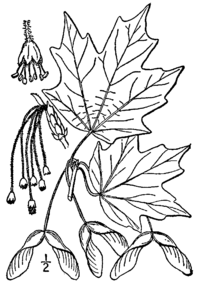 Wikipedia • Commons • Wikibooks (horticulture) • Wikibooks (subject) • Wikispecies • Fruit and seed clock |
Profile for Acer saccharum (Sugar Maple)
Recent Logs[edit | edit source]
| ||||
Global data:
Temperate zone season(s): Early Spring, Mid Spring
Achillea millefolium
 Wikipedia • Commons • Wikibooks (horticulture) • Wikibooks (subject) • Wikispecies • Fruit and seed clock |
Profile for Achillea millefolium (Common Yarrow)
Recent Logs[edit | edit source]
TristanDolciano *˜˜˜12:00, 22 July 2019 (UTC) | ||||||||||
Global data:
Temperate zone season(s): Late Spring, Early Summer, Mid Summer, Late Summer, Early Fall, Mid Fall, Late Fall
Aesculus hippocastanum
 Wikipedia • Commons • Wikibooks (horticulture) • Wikibooks (subject) • Wikispecies • Fruit and seed clock |
Profile for Aesculus hippocastanum (Horse Chestnut)
Recent Logs[edit | edit source]
| ||
Global data:
Amelanchier bartramiana
 Wikipedia • Commons • Wikibooks (horticulture) • Wikibooks (subject) • Wikispecies • Fruit and seed clock |
Profile for Amelanchier bartramiana (Mountain Juneberry, Oblongfruit Serviceberry)
Recent Logs[edit | edit source]
| ||||||||||||||||
Global data:
Antennaria parlinii
 Wikipedia • Commons • Wikibooks (horticulture) • Wikibooks (subject) • Wikispecies • Fruit and seed clock |
Profile for Antennaria parlinii (Parlin's pussytoes, Ladies' tobacco)
Recent Logs[edit | edit source]
| ||||||
Global data:
Aralia nudicaulis
 Wikipedia • Commons • Wikibooks (horticulture) • Wikibooks (subject) • Wikispecies • Fruit and seed clock |
Profile for Aralia nudicaulis (Wild Sarsaparilla, Smooth Sarsaparilla)
Recent Logs[edit | edit source]
| ||||||||||||||||
Global data:
Betula
 Wikipedia • Commons • Wikibooks (horticulture) • Wikibooks (subject) • Wikispecies • Fruit and seed clock |
Profile for Betula (Birch)
Recent Logs[edit | edit source]
| ||||||||||||||
Global data:
Cerastium
 Wikipedia • Commons • Wikibooks (horticulture) • Wikibooks (subject) • Wikispecies • Fruit and seed clock |
Profile for Cerastium (Mouse-ear Chickweed)
Recent Logs[edit | edit source] | ||
Global data:
Temperate zone season(s): Late Spring, Early Summer
Clintonia borealis
 Wikipedia • Commons • Wikibooks (horticulture) • Wikibooks (subject) • Wikispecies • Fruit and seed clock |
Profile for Clintonia borealis (Clintonia, Corn Lily)
Recent Logs[edit | edit source]
| ||||||||||||
Global data:
Convallaria majalis
 Wikipedia • Commons • Wikibooks (horticulture) • Wikibooks (subject) • Wikispecies • Fruit and seed clock |
Profile for Convallaria majalis (Lily of the Valley)
Recent Logs[edit | edit source]
| ||||||||||||||||
Global data:
Coptis groenlandica
 Wikipedia • Commons • Wikibooks (horticulture) • Wikibooks (subject) • Wikispecies • Fruit and seed clock |
Profile for Coptis groenlandica (Goldthread)
Recent Logs[edit | edit source]
| ||||||||||
Global data:
Cornus canadensis
 Wikipedia • Commons • Wikibooks (horticulture) • Wikibooks (subject) • Wikispecies • Fruit and seed clock |
Profile for Cornus canadensis (Common bunchberry)
Recent Logs[edit | edit source]
| ||||||||||||||
Global data:
Cypripedium acaule
 Wikipedia • Commons • Wikibooks (horticulture) • Wikibooks (subject) • Wikispecies • Fruit and seed clock |
Profile for Cypripedium acaule (Pink Lady's Slipper, Moccasin Flower)
Recent Logs[edit | edit source]
| ||||||||||||||
Global data:
Elaeagnus umbellata
 Wikipedia • Commons • Wikibooks (horticulture) • Wikibooks (subject) • Wikispecies • Fruit and seed clock |
Profile for Elaeagnus umbellata (Autumn Olive)
Recent Logs[edit | edit source]
| ||||||||||||||||||||
Global data:
Epigaea repens
 Wikipedia • Commons • Wikibooks (horticulture) • Wikibooks (subject) • Wikispecies • Fruit and seed clock |
Profile for Epigaea repens (Trailing Arbutus, Mayflower)
Recent Logs[edit | edit source]
| ||||||||||||||||
Global data:
Euphorbia cyparissias
 Wikipedia • Commons • Wikibooks (horticulture) • Wikibooks (subject) • Wikispecies • Fruit and seed clock |
Profile for Euphorbia cyparissias (Cypress spurge)
Recent Logs[edit | edit source]
| ||
Global data:
Forsythia x intermedia
 Wikipedia • Commons • Wikibooks (horticulture) • Wikibooks (subject) • Wikispecies • Fruit and seed clock |
Profile for Forsythia x intermedia (Garden Forsythia)
Recent Logs[edit | edit source] | ||||||||||
Global data:
Temperate zone season(s): Early Winter, Mid Winter, Early Spring, Mid Spring
Fragaria vesca
 Wikipedia • Commons • Wikibooks (horticulture) • Wikibooks (subject) • Wikispecies • Fruit and seed clock |
Profile for Fragaria vesca (Woodland Strawberry)
Recent Logs[edit | edit source]
| ||
Global data:
Temperate zone season(s): Mid Spring, Late Spring, Late Summer, Early Fall
Hieracium pratense
 Wikipedia • Commons • Wikibooks (horticulture) • Wikibooks (subject) • Wikispecies • Fruit and seed clock |
Profile for Hieracium pratense (Yellow Hawkweed, King Devil)
Recent Logs[edit | edit source]
| ||||||||||||||||
Global data:
Temperate zone season(s): Late Spring, Early Summer, Mid Summer, Late Summer
Houstonia caerulea
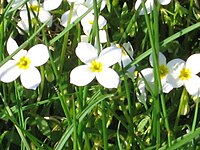 Wikipedia • Commons • Wikibooks (horticulture) • Wikibooks (subject) • Wikispecies • Fruit and seed clock |
Profile for Houstonia caerulea (Azure Bluet)
Recent Logs[edit | edit source]
| ||||||||||||||||
Global data:
Temperate zone season(s): Mid Spring, Late Spring, Early Summer, Mid Summer
Lepidium virginicum
 Wikipedia • Commons • Wikibooks (horticulture) • Wikibooks (subject) • Wikispecies • Fruit and seed clock |
Profile for Lepidium virginicum (Virginia pepperweed)
Recent Logs[edit | edit source] | ||||||||||||||||
Global data:
Temperate zone season(s): Early Summer, Mid Summer, Late Summer, Early Fall, Mid Fall, Late Fall
Lotus corniculatus
 Wikipedia • Commons • Wikibooks (horticulture) • Wikibooks (subject) • Wikispecies • Fruit and seed clock |
Profile for Lotus corniculatus (Birdsfoot Trefoil)
Recent Logs[edit | edit source]
| ||||||||||||||
Global data:
Temperate zone season(s): Late Spring, Early Summer, Mid Summer, Late Summer, Early Fall, Mid Fall
Maianthemum canadense
 Wikipedia • Commons • Wikibooks (horticulture) • Wikibooks (subject) • Wikispecies • Fruit and seed clock |
Profile for Maianthemum canadense (False Lily-of-the-valley)
Recent Logs[edit | edit source]
| ||||||||||
Global data:
Narcissus
 Wikipedia • Commons • Wikibooks (horticulture) • Wikibooks (subject) • Wikispecies • Fruit and seed clock |
Profile for Narcissus (Daffodil, Jonquil, Narcissus)
Recent Logs[edit | edit source]
| ||||||||
Global data:
Temperate zone season(s): Early Spring, Mid Spring, Late Spring
Nuphar variegata
 Wikipedia • Commons • Wikibooks (horticulture) • Wikibooks (subject) • Wikispecies • Fruit and seed clock |
Profile for Nuphar variegata (Bullhead Lily, Yellow Pond Lily)
Recent Logs[edit | edit source]
| ||||||||
Global data:
Temperate zone season(s): Late Spring, Early Summer, Mid Summer, Late Summer
Orobanche uniflora
 Wikipedia • Commons • Wikibooks (horticulture) • Wikibooks (subject) • Wikispecies • Fruit and seed clock |
Profile for Orobanche uniflora (One-flowered Cancerroot)
Recent Logs[edit | edit source]
| ||||||||||||
Global data:
Oxalis stricta
 Wikipedia • Commons • Wikibooks (horticulture) • Wikibooks (subject) • Wikispecies • Fruit and seed clock |
Profile for Oxalis stricta (Common Yellow Woodsorrel)
Recent Logs[edit | edit source]
| ||||||||||||||
Global data:
Temperate zone season(s): Mid Spring, Late Spring, Early Summer, Mid Summer, Late Summer, Early Fall, Mid Fall, Late Fall
Panax trifolius
 Wikipedia • Commons • Wikibooks (horticulture) • Wikibooks (subject) • Wikispecies • Fruit and seed clock |
Profile for Panax trifolius (Dwarf Ginseng)
Recent Logs[edit | edit source]
| ||||||||||||
Global data:
Phlox sublata
 Wikipedia • Commons • Wikibooks (horticulture) • Wikibooks (subject) • Wikispecies • Fruit and seed clock |
Profile for Phlox subulata (Moss phlox)
Recent Logs[edit | edit source]Ngravagna 18:46, 28 April 2009 (UTC) | ||
Global data:
Temperate zone season(s): Mid Spring, Late Spring
Pinguicula vulgaris
 Wikipedia • Commons • Wikibooks (horticulture) • Wikibooks (subject) • Wikispecies • Fruit and seed clock |
Profile for Pinguicula vulgaris (Butterwort)
Recent Logs[edit | edit source]
| ||||||||||||||||
Global data:
Polygala paucifolia
 Wikipedia • Commons • Wikibooks (horticulture) • Wikibooks (subject) • Wikispecies • Fruit and seed clock |
Profile for Polygala paucifolia (Gaywings)
Recent Logs[edit | edit source]
| ||||||||||||
Global data:
Streptopus lanceolatus
 Wikipedia • Commons • Wikibooks (horticulture) • Wikibooks (subject) • Wikispecies • Fruit and seed clock |
Profile for Streptopus lanceolatus (Rose Twisted Stalk)
Recent Logs[edit | edit source]
| ||||||||||||
Global data:
Potentilla canadensis
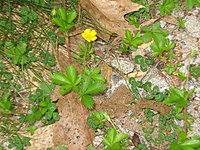 Wikipedia • Commons • Wikibooks (horticulture) • Wikibooks (subject) • Wikispecies • Fruit and seed clock |
Profile for Potentilla canadensis (Dwarf Cinquefoil)
Recent Logs[edit | edit source] | ||||||||||||
Global data:
Prunus
 Wikipedia • Commons • Wikibooks (horticulture) • Wikibooks (subject) • Wikispecies • Fruit and seed clock |
Profile for Prunus (Cherry)
Recent Logs[edit | edit source]
| ||||||||||||||
Global data:
Temperate zone season(s): Early Spring, Mid Spring, Late Spring, Early Fall, Mid Fall
Ranunculus
 Wikipedia • Commons • Wikibooks (horticulture) • Wikibooks (subject) • Wikispecies • Fruit and seed clock |
Profile for Ranunculus (Buttercup)
Recent Logs[edit | edit source]
| ||||
Global data:
Temperate zone season(s): Early Spring, Mid Spring
Rhododendron
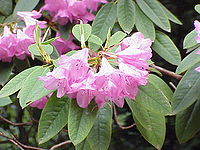 Wikipedia • Commons • Wikibooks (horticulture) • Wikibooks (subject) • Wikispecies • Fruit and seed clock |
Profile for Rhododendron (Rhododendrons and Azaleas)
Recent Logs[edit | edit source] | ||||
Global data:
Temperate zone season(s): Early Spring, Mid Spring, Late Spring, Early Summer, Mid Summer
Robinia pseudoacacia
 Wikipedia • Commons • Wikibooks (horticulture) • Wikibooks (subject) • Wikispecies • Fruit and seed clock |
Profile for Robinia pseudoacacia (Black Locust)
Recent Logs[edit | edit source]
| ||
Global data:
Temperate zone season(s): Late Spring
Rosa
 Wikipedia • Commons • Wikibooks (horticulture) • Wikibooks (subject) • Wikispecies • Fruit and seed clock |
Profile for Rosa (Rose)
Recent Logs[edit | edit source]
| ||||||||||||||
Global data:
Temperate zone season(s): Late Spring, Early Summer, Mid Summer, Late Summer, Early Fall Mid Fall, Late Fall
Rubus
 Wikipedia • Commons • Wikibooks (horticulture) • Wikibooks (subject) • Wikispecies • Fruit and seed clock |
Profile for Rubus (Blackberries, Raspberries, and Dewberries)
Recent Logs[edit | edit source] | ||
Global data:
Rubus pensilvanicus
 Wikipedia • Commons • Wikibooks (horticulture) • Wikibooks (subject) • Wikispecies • Fruit and seed clock |
Profile for Rubus pensilvanicus (Blackberry)
Recent Logs[edit | edit source]
| ||
Global data:
Temperate zone season(s): Late Spring, Early Summer
Rumex acetosella
 Wikipedia • Commons • Wikibooks (horticulture) • Wikibooks (subject) • Wikispecies • Fruit and seed clock |
Profile for Rumex acetosella (Sheepsorrel)
Recent Logs[edit | edit source]
| ||||||||||||
Global data:
Temperate zone season(s): Late Spring, Early Summer
Salix 'Pendula'
 Wikipedia • Commons • Wikibooks (horticulture) • Wikibooks (subject) • Wikispecies • Fruit and seed clock |
Profile for Salix 'Pendula' (Weeping Willow)
Recent Logs[edit | edit source]
| ||||
Global data:
Temperate zone season(s): Mid Spring
Sorbus americana
 Wikipedia • Commons • Wikibooks (horticulture) • Wikibooks (subject) • Wikispecies • Fruit and seed clock |
Profile for Sorbus americana (American Mountain Ash)
Recent Logs[edit | edit source]
| ||||||||||||||||
Global data:
Spergularia
 Wikipedia • Commons • Wikibooks (horticulture) • Wikibooks (subject) • Wikispecies • Fruit and seed clock |
Profile for Spergularia (Sandspurry)
Recent Logs[edit | edit source]
| ||||||||||||||
Global data:
Temperate zone season(s): Late Spring, Early Summer, Mid Summer, Late Summer, Early Fall
Syringa vulgaris
 Wikipedia • Commons • Wikibooks (horticulture) • Wikibooks (subject) • Wikispecies • Fruit and seed clock |
Profile for Syringa vulgaris (Common Lilac)
Recent Logs[edit | edit source]
| ||
Global data:
Temperate zone season(s): Mid Spring, Late Spring
Taraxacum officinale
 Wikipedia • Commons • Wikibooks (horticulture) • Wikibooks (subject) • Wikispecies • Fruit and seed clock |
Profile for Taraxacum officinale (Common Dandelion)
Recent Logs[edit | edit source]
| ||||||||||||||||||
Global data:
Temperate zone season(s): Mid Winter, Late Winter, Early Spring, Mid Spring, Late Spring, Early Summer, Mid Summer, Late Summer, Early Fall, Mid Fall, Late Fall, Early Winter
Trientalis borealis
 Wikipedia • Commons • Wikibooks (horticulture) • Wikibooks (subject) • Wikispecies • Fruit and seed clock |
Profile for Trientalis borealis (Starflower)
Recent Logs[edit | edit source]
| ||||||||||||
Global data:
Trifolium pratense
 Wikipedia • Commons • Wikibooks (horticulture) • Wikibooks (subject) • Wikispecies • Fruit and seed clock |
Profile for Trifolium pratense (Red Clover)
Recent Logs[edit | edit source]
| ||||||||||
Global data:
Temperate zone season(s): Late Spring, Early Summer, Mid Summer, Late Summer, Early Fall, Mid Fall, Late Fall
Trifolium repens
 Wikipedia • Commons • Wikibooks (horticulture) • Wikibooks (subject) • Wikispecies • Fruit and seed clock |
Profile for Trifolium repens (White Clover)
Recent Logs[edit | edit source]
| ||||||||||
Global data:
Temperate zone season(s): Late Spring, Early Summer, Mid Summer, Late Summer, Early Fall, Mid Fall
Trillium undulatum
 Wikipedia • Commons • Wikibooks (horticulture) • Wikibooks (subject) • Wikispecies • Fruit and seed clock |
Profile for Trillium undulatum (Painted Trillium)
Recent Logs[edit | edit source]
| ||||||||||||
Global data:
Tulipa
 Wikipedia • Commons • Wikibooks (horticulture) • Wikibooks (subject) • Wikispecies • Fruit and seed clock |
Profile for Tulipa (Tulip)
Recent Logs[edit | edit source]
| ||
Global data:
Temperate zone season(s): Mid Spring, Late Spring
Tussilago farfara
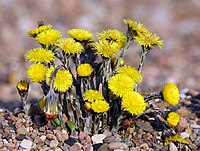 Wikipedia • Commons • Wikibooks (horticulture) • Wikibooks (subject) • Wikispecies • Fruit and seed clock |
Profile for Tussilago farfara (Coltsfoot)
Recent Logs[edit | edit source]
| ||||||||||||||
Global data:
Vaccinium
 Wikipedia • Commons • Wikibooks (horticulture) • Wikibooks (subject) • Wikispecies • Fruit and seed clock |
Profile for Vaccinium (Blueberry, Cranberry)
Recent Logs[edit | edit source]
| ||
Global data:
Temperate zone season(s): Mid Spring, Late Spring
Veronica officinalis
 Wikipedia • Commons • Wikibooks (horticulture) • Wikibooks (subject) • Wikispecies • Fruit and seed clock |
Profile for Veronica officinalis (Heath Speedwell)
Recent Logs[edit | edit source] | ||||||||||||
Global data:
Viburnum lantanoides
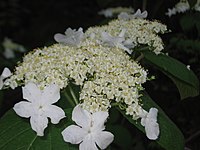 Wikipedia • Commons • Wikibooks (horticulture) • Wikibooks (subject) • Wikispecies • Fruit and seed clock |
Profile for Viburnum lantanoides (Hobblebush)
Recent Logs[edit | edit source]
| ||||||||||||||
Global data:
Vicia cracca
 Wikipedia • Commons • Wikibooks (horticulture) • Wikibooks (subject) • Wikispecies • Fruit and seed clock |
Profile for Vicia cracca (Tufted Vetch)
Recent Logs[edit | edit source]
| ||
Global data:
Temperate zone season(s): Late Spring, Early Summer, Mid Summer, Late Summer, Early Fall, Mid Fall, Late Fall
Vinca minor
 Wikipedia • Commons • Wikibooks (horticulture) • Wikibooks (subject) • Wikispecies • Fruit and seed clock |
Profile for Vinca minor (Periwinkle)
Recent Logs[edit | edit source]
| ||||||||||
Global data:
Temperate zone season(s): Early Winter, Mid Winter, Early Spring, Mid Spring, Late Spring, Early Summer, Early Fall, Mid Fall, Late Fall
Viola
 Wikipedia • Commons • Wikibooks (horticulture) • Wikibooks (subject) • Wikispecies • Fruit and seed clock |
Profile for Viola (Violet)
Recent Logs[edit | edit source]
| ||||
Global data:
Temperate zone season(s): Mid Spring, Late Spring, Early Summer, Mid Summer, Early Fall, Mid Fall, Late Fall, Early Winter
Viola tricolor
 Wikipedia • Commons • Wikibooks (horticulture) • Wikibooks (subject) • Wikispecies • Fruit and seed clock |
Profile for Viola tricolor (Heartsease, Johnny-jump-up)
Recent Logs[edit | edit source]
| ||
Global data:
Temperate zone season(s): Early Summer, Mid Summer, Late Summer, Early Fall, Mid Fall
